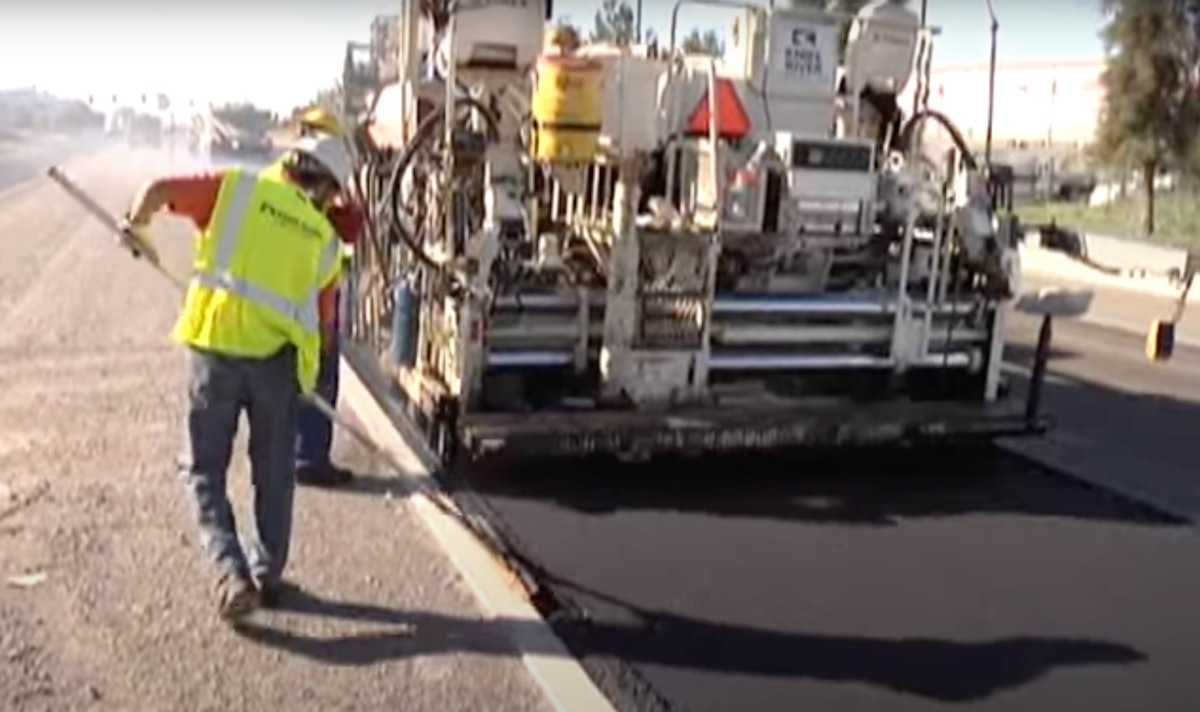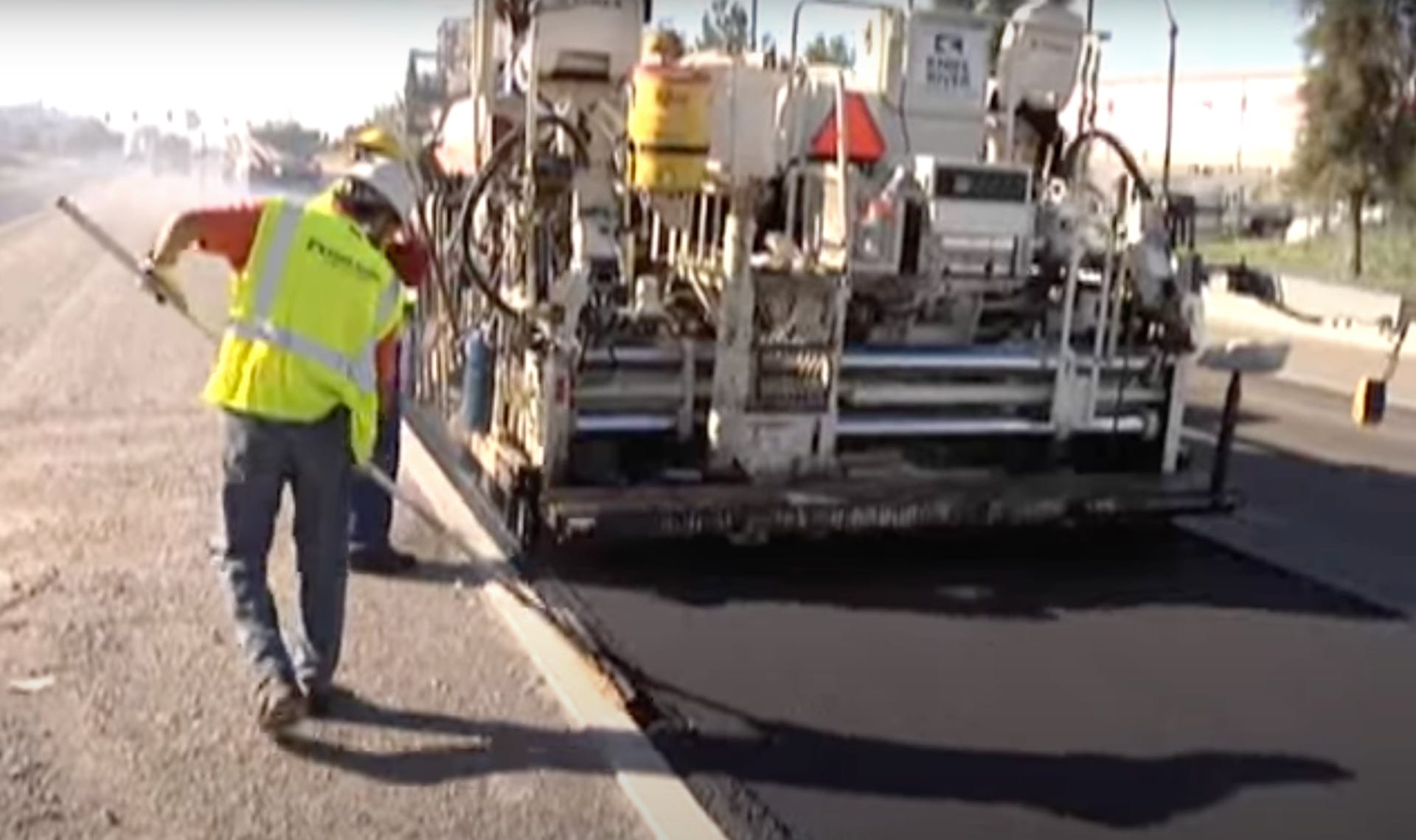
State departments of transportation are missing out on opportunities to use recycled tire rubber in asphalt mixes for roads, according to the Recycled Rubber Coalition.
The coalition reports that U.S. tire recycling dropped to 76% in 2019 from its peak of 96% in 2013. With federal infrastructure funding reaching state DOTs and incentives to reduce paving’s carbon footprint, the coalition says there’s a great opportunity to use some of that money to use scrap tires to create rubber-modified asphalt, or RMA.
RMA can reduce costs, improve driving conditions, help the environment, reduce road noise and increase pavement life, the coalition says. It can also help keep the 300 million tires scrapped each year in the U.S. out of landfills.
Stratton Kirton, a spokesman for the coalition, sees the additional road infrastructure funding as a potential way to close the gap and get back to previous recycling levels of 96%.
“You have some states that have really embraced it,” Stratton says, citing California and Arizona. “A lot of states sort of use it sporadically.” In all, 32 states use or plan to use RMA in test or field projects, according to the U.S. Tire Manufacturers Association.
Savings on a typical road project with 2 inches of RMA can be 40% to 43% over the road’s lifecycle when compared to traditional asphalt, Kirton says. It can cost more upfront, but the road will have a longer life span and require less maintenance. Some specialized equipment may be required for hot-mix RMA, as well. When it comes to crack sealing, the savings are recognized upfront, he says.
According to the Federal Highway Administration, recycled tires have been used in asphalt mixtures and surface treatments since the 1960s, as an asphalt binder modifier and asphalt mixture additive.
The interest in rubber-modified asphalt has waxed and waned over the years. Briefly during the early 1990s, there was a federal mandate to use RMA because so many tires were ending up in landfills. “At the time, the technology wasn’t there,” Kirton says of RMA. “The industry is much more advanced today. There are lots of different blends, whether it’s hot or cold mix or wet or dry applications.”
Some states have been using recycled tire rubber in road construction for years and are reporting some promising results:
- A 3,300-foot section of road made of pieces of more than 3,600 recycled rubber tires in Dickinson County, Michigan, was completed in 2019. Since then it has gone through Michigan’s severe winters and hot summers and has proven more resistant to rutting during hot temperatures and cracking during cold weather, according to the Dickinson County Road Commission. The project – also involving Michigan Technological University and the Michigan Department of Environment, Great Lakes, and Energy – will be monitored and tested for 10 or so years. “Our hopes are that this project will demonstrate that rubberized asphalt not only is smoother, quieter and longer lasting than traditional asphalt, but can also be made economically,” says Lance Malburg, Dickinson County Road Commission highway engineer.
- In 2021, the city of Bend, Oregon, repaired more than 14 miles of residential streets using chip seal made with recycled rubber tires. The city estimates the process saved about $70,000 per mile versus resurfacing the road. It used 250 recycled tires per mile.
- California has been using rubberized asphalt since the 1970s and offers grants of up to $250,000 for paving projects that use recycled tires. CalRecycle reports a 26% decrease in material costs when using rubberized asphalt concrete instead of conventional asphalt on a 4-inch overlay project in Southern California.
Kirton says the Recycled Rubber Coalition’s goal is two-fold: that states and localities use some of the federal infrastructure funding for RMA and also talk about why they’re using RMA and its benefits.
“The more that people know about it,” he says, “the more demand there’s going to be to use it because you have the benefits for drivers, the benefits for the public and the benefits for the environment.”
